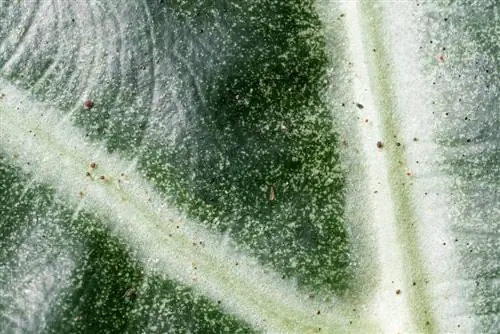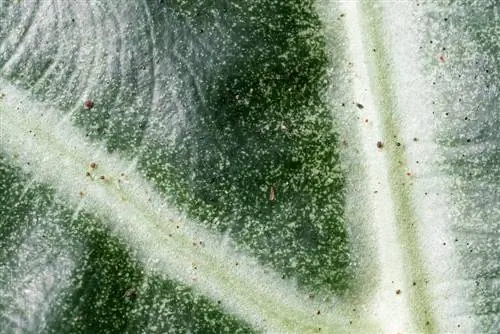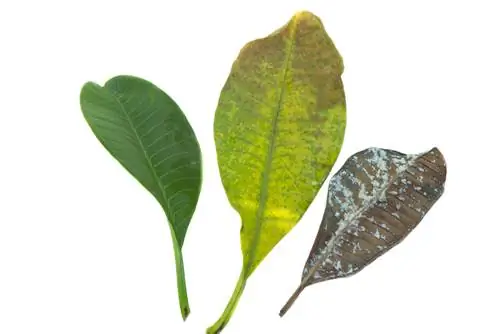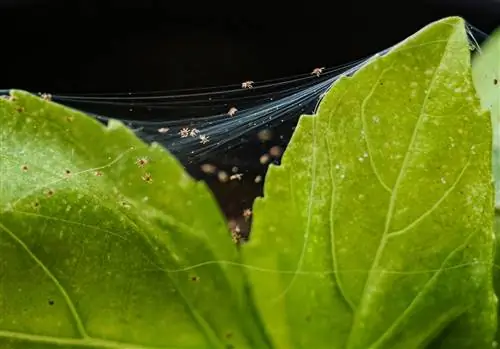- Author admin [email protected].
- Public 2023-12-16 16:46.
- Last modified 2025-01-23 11:22.
Just in time for the start of the heating season, spider mites are there and deprive alocasia of its lifeblood. The sooner you get to the bottom of the pests, the more successful your spider mite control will be. Read here how you can accurately identify and successfully combat spider mite infestations on Alocasia.

How do you recognize and combat spider mites on Alocasia?
You can recognize spider mites on Alocasia by their silvery speckles, yellow-brown spots and fine webs. Fight them by showering, foil wrapping and spraying with organic spray. Increase humidity to prevent spider mites.
What does spider mite infestation look like on Alocasia?
Spider mite infestation on Alocasia can be recognized bysilvery speckles, yellowish-brownspotsand extremely delicatewebsin the leaf axils. In the advanced stage, the spots converge, the leaves yellow and die. Spider mites usually sit on the leaves, where the pests pierce individual plant cells and suck out the plant sap. This is what a spider mite looks like:
- 0.2mm to 0.5mm small (pinhead size)
- Arachnid with 8 legs.
- Oval to pear-shaped body.
- Yellowish-green to brownish-red in color.
- Found on the underside of leaves, in leaf axils and in potting soil.
How to combat spider mites on Alocasia?
A three-step plan has proven successful in combating spider mites on alocasia:Showering,Foil packagingandSpray with organic spray. How to correctly use the non-toxic elephant ear control method:
- Place Alocasia in the bathtub and rinse with as strong a jet of water as possible.
- Put a plastic bag over the leaves for two weeks and tie it together just above the root ball.
- Spray alocasia repeatedly with curd soap-spirit solution, onion decoction or garlic tea as a home remedy or treat with a non-toxic product based on rapeseed oil or neem oil from a specialist retailer (e.g. Naturen Bio-Schädlingsfrei Forte).
What can I do to prevent spider mites on Alocasia?
Effective prevention against spider mites on Alocasia isincreased humidity at the location. Spider mites are typical winter pests with a preference for dry heating air. If there is as much humidity as possible near the plants, you can prevent spider mite infestation. This is how it works:
- Spray Alocasia leaves regularly with filtered rainwater or decalcified tap water.
- Set up humidifier.
- Fill coasters with expanded clay and water to increase local humidity.
- Keep substrate constantly slightly moist.
Tip
Predatory mites hunt spider mites
If alocasia or other houseplants in the greenhouse suffer from spider mite infestation, the use of beneficial insects has proven to be effective. The two predatory mite species Phytoseiulus persimilis and Amblyseius californicus are natural opponents of the pests. The beneficial insects enthusiastically hunt and destroy spider mites at every stage of development. The most important prerequisites for successful pest control are ideal living conditions for predatory mites (room temperature, high humidity) and the avoidance of chemical pesticides.






